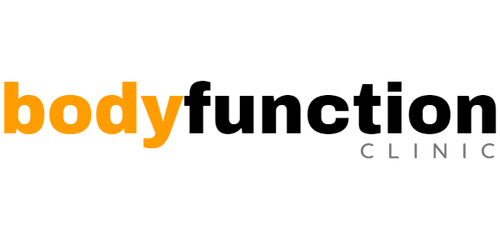24/7 online booking

Can Osteopathy Help with Rotator Cuff Injury? A Comprehensive Approach to Shoulder Rehabilitation
Rotator cuff injuries are a common issue, particularly among athletes, manual workers, and those who engage in repetitive overhead activities. These injuries can cause significant pain, limit shoulder movement, and impact daily activities. While conventional treatments like rest, physiotherapy, and sometimes surgery are often recommended, osteopathy offers a holistic and non-invasive approach to managing rotator cuff injuries. In this blog, we will explore how osteopathy can help in the recovery from a rotator cuff injury and support overall shoulder health.
Understanding Rotator Cuff Injuries
The rotator cuff is a group of four muscles and their tendons that stabilise the shoulder joint and allow for a wide range of shoulder movements. These muscles include:
- Supraspinatus
- Infraspinatus
- Teres minor
- Subscapularis
A rotator cuff injury typically involves a tear or strain in one or more of these tendons or muscles. Common causes include:
- Repetitive stress: Activities that involve repeated overhead movements, such as painting, swimming, or tennis, can place stress on the rotator cuff, leading to overuse injuries.
- Acute injury: A sudden force, such as a fall or lifting something heavy, can cause a tear in the rotator cuff.
- Age-related degeneration: As we age, the tendons in the rotator cuff can weaken and become more susceptible to injury.
Symptoms of a rotator cuff injury can range from mild to severe and may include:
- Pain: Often felt on the outside of the shoulder and sometimes radiating down the arm, especially when lifting or reaching.
- Weakness: Difficulty lifting the arm or holding it in certain positions.
- Limited range of motion: Stiffness and reduced ability to move the shoulder.
How Can Osteopathy Help with Rotator Cuff Injuries?
Osteopathy is a manual therapy that focuses on the body’s musculoskeletal system, aiming to restore balance, improve function, and promote healing. For those with rotator cuff injuries, osteopathy can offer a comprehensive approach to recovery through various techniques and holistic care.
1. Reducing Pain and Inflammation
One of the primary benefits of osteopathy for rotator cuff injuries is the reduction of pain and inflammation. Osteopaths use gentle, hands-on techniques to address the soft tissues and joints around the shoulder, helping to alleviate discomfort.
- Soft tissue massage: This technique helps to relax tight muscles, improve blood flow, and reduce inflammation around the injured area. By easing muscle tension, osteopaths can help relieve pain and promote healing.
- Joint mobilisation: Gentle mobilisation of the shoulder joint can help maintain or improve its range of motion, which is often limited by pain and stiffness in rotator cuff injuries.
2. Improving Shoulder Function and Mobility
Osteopathy focuses on restoring normal movement patterns and improving the function of the shoulder joint. By addressing both the injured rotator cuff and the surrounding structures, osteopaths can help improve overall shoulder mobility.
- Stretching and strengthening exercises: Osteopaths often recommend specific exercises to stretch and strengthen the muscles around the shoulder. Strengthening the rotator cuff and surrounding muscles can help stabilise the shoulder and prevent further injury.
- Postural correction: Poor posture, particularly rounded shoulders or a forward head position, can contribute to rotator cuff injuries by placing additional strain on the shoulder muscles. Osteopaths can assess and correct postural issues, helping to reduce the likelihood of re-injury.
3. Supporting the Healing Process
Osteopathy aims to support the body’s natural healing processes by improving circulation, reducing muscle tension, and ensuring proper alignment of the shoulder joint.
- Myofascial release: This technique focuses on the fascia, a connective tissue that surrounds muscles and organs. By releasing tension in the fascia, osteopaths can enhance blood flow and nutrient delivery to the injured area, promoting faster healing.
- Cranial osteopathy: In some cases, osteopaths may use cranial techniques to address tension patterns that affect the entire body, including the shoulder. By promoting relaxation and reducing overall stress, these techniques can support the healing process.
4. Preventing Future Injuries
An important aspect of osteopathy is its focus on preventing future injuries. Osteopaths provide advice on lifestyle modifications, exercise routines, and ergonomic adjustments that can help protect the rotator cuff from further damage.
- Activity modification: Osteopaths can offer guidance on how to modify activities that strain the rotator cuff, such as changing the way you lift or carry objects.
- Ergonomic advice: For those whose work or hobbies involve repetitive shoulder movements, osteopaths can suggest ergonomic changes to reduce strain on the shoulder joint.
When to Consider Osteopathy for Rotator Cuff Injuries
Osteopathy can be particularly beneficial for those who are looking for a non-invasive, holistic approach to managing a rotator cuff injury. It is also a useful complement to other forms of treatment, such as physiotherapy or medical care, providing a broader scope of support for recovery.
If you have sustained a rotator cuff injury, it is essential to consult with a healthcare professional to determine the extent of the injury and the most appropriate treatment plan. An osteopath will take a detailed history and conduct a physical examination to develop a tailored treatment strategy that addresses your specific needs.
Conclusion
Rotator cuff injuries can be painful and limiting, but with the right approach, it is possible to recover and regain full shoulder function. Osteopathy offers a gentle and holistic method of treatment, focusing on reducing pain, improving mobility, and supporting the body’s natural healing processes. By addressing the underlying causes of the injury and promoting overall shoulder health, osteopathy can help you get back to your daily activities with confidence.
If you are dealing with a rotator cuff injury and are looking for a natural, hands-on approach to recovery, consider consulting a registered osteopath. Together, we can explore how osteopathy can support your journey to a pain-free, fully functional shoulder.
If you would like to book and appointment with us, you can do so by clicking here.

Leave a comment